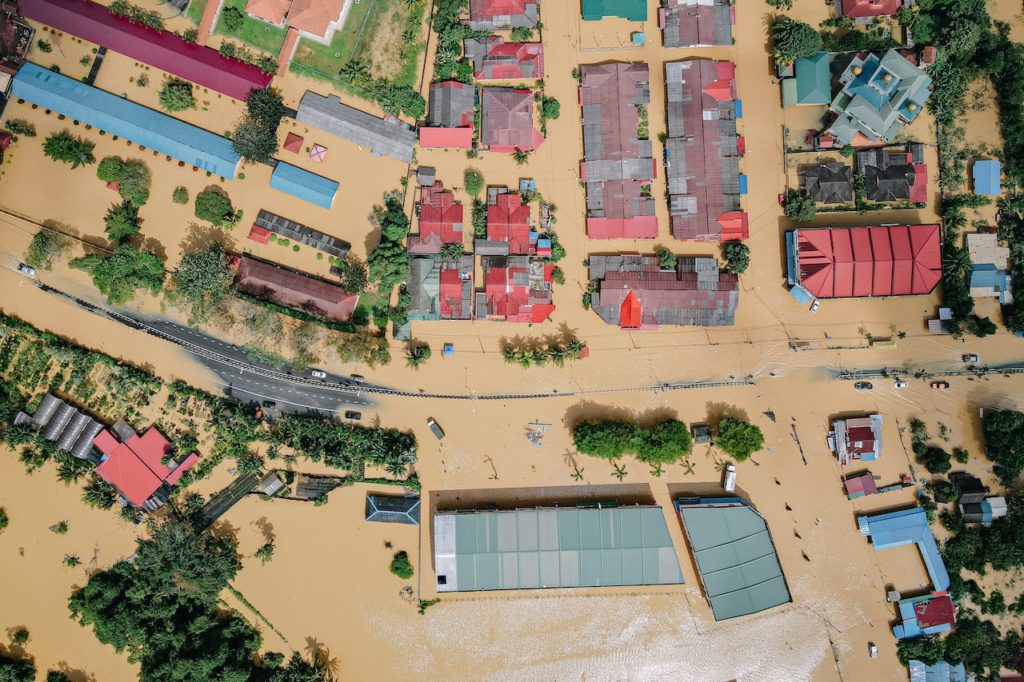Floods can have a devastating effect on businesses. Not only do they cause physical damage to the property and equipment, but they can also interrupt business operations and disrupt supply chains. In some cases, floods can even force businesses to close down permanently.
But it is not all doom and gloom. With the right tools and resources, businesses can get back on track after a flood. Here are six tips to help you get started.
Contact the professionals
When it comes to flood damage, it is important to contact professionals as soon as possible. They will be able to assess the damage and provide you with a plan of action. Depending on the damage level, this plan can include anything from repairing the damage to relocating the business.
However, once the professional assessment is complete, it is time to start the cleanup process. This will involve removing all of the water from the premises, as well as any damaged materials. You will also need to disinfect the area to prevent the growth of mold and mildew. If you want to read more about this, you can visit cleaning agencies’ websites, or read articles about post-flood cleanup. The process can be long and difficult, but it depends on the efficiency and quality of the cleanup.
Get in touch with your insurance company
Your insurance company will be able to help you with the financial side of things. They can provide you with information on what is covered by your policy and what is not. In some cases, if the flood damage is extensive, they may even be able to provide you with a payout.
It is important to remember that each insurance policy is different, some policies may not cover damage caused by floods, so it is important to check this before making any claims, and read the fine print before making any decisions. You should also keep all receipts and documentation related to the damage, as this will be required when making a claim.
Create a recovery plan
Once the immediate aftermath of the flood has passed, it is time to start thinking about recovery. This will involve creating a plan of action that will help you get your business back on track. Depending on the extent of the damage, this plan can be as simple or as complex as you need it to be.
Some things you may want to consider are:
- How long will it take to repair the damage?
- Is it possible to relocate the business temporarily?
- How will you keep your customers and employees updated on the situation?
- What are your priorities?
There is no wrong or right answer here, as each business will have different needs. The important thing is to create a plan that will work for you and your business.
Get help from the government
In some cases, the government may be able to provide you with financial assistance to help you recover from the flood. This assistance can come in the form of grants or loans, and it can be used to cover the cost of repairs, replacement stock, or even relocation costs.
To find out if you are eligible for government assistance, you will need to contact your local Small Business Administration (SBA) office. They will be able to provide you with information on the different programs available and how to apply for them.
Reach out to your network
Your network can be a valuable resource when it comes to getting your business back on track after a flood. They may be able to provide you with advice, assistance, or even financial help. In some cases, they may even be able to put you in touch with other businesses that have been through a similar experience.
If you are not sure where to start, you can reach out to your local chamber of commerce or business association. They will be able to put you in touch with the right people and help you get the assistance you need.
However, it is important to remember that you should only accept help from people you trust. Be cautious of anyone who asks for upfront payment or personal information, as this could be a scam.
Keep communication open
One of the most important things you can do after a flood is to keep communication open with your employees, customers, and suppliers. This will help to ensure that everyone is on the same page and that everyone knows what is going on. It can also help to build trust and keep your relationships strong.
There are a few different ways you can do this, such as:
- Sending regular updates via email or social media
- Having a dedicated phone line or website where people can get information
- Organizing regular meetings or conference calls
The important thing is to find a method that works for you and your business.

A flood can devastate a business, but with the right tools and resources, it is possible to get your business back on track. Following these tips will help you get your business back on track after a flood.
Upgrade Your Office Tips >>
